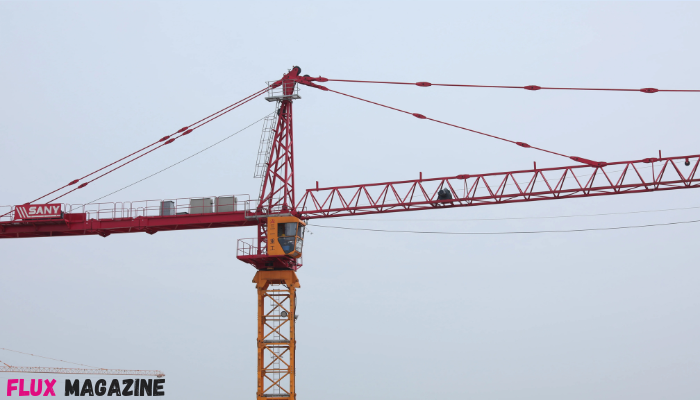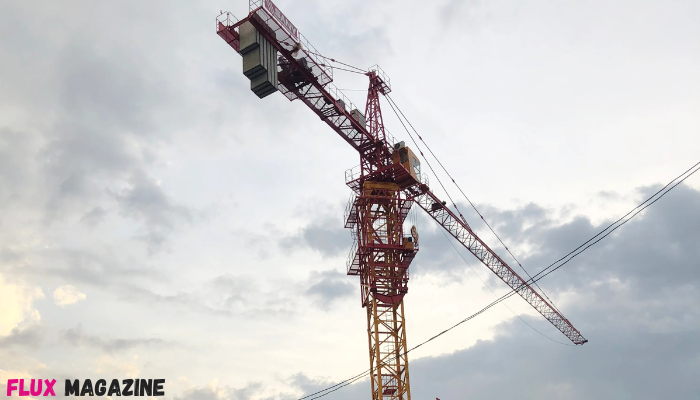Tower Crane Installation and Dismantling Process
Tower cranes are vital in modern construction, enabling efficient lifting and precise placement of heavy materials at great heights. Their installation and dismantling demand accuracy, careful planning, and strict adherence to safety standards. This guide details every stage, from site assessment to final dismantling, ensuring smooth workflow, minimized risks, and compliance with industry regulations for safe, efficient construction project execution.
Preparation before Tower Crane Installation
Site Assessment and Ground Conditions
Conduct a thorough evaluation of the construction site, focusing on soil stability and load-bearing capacity. Perform soil testing to confirm the ground can safely support the crane’s foundation and future operations. Identify potential hazards, obstructions, or underground utilities. A well-prepared site assessment ensures structural reliability, reduces risks of accidents, and provides confidence in long-term crane stability throughout project operations.
Also Read: How Mini Excavators Improve Project Efficiency
Planning and Crane Selection
Selecting the right crane requires a clear understanding of project requirements, including load weight, lifting height, and horizontal reach. Factors such as site dimensions, project schedule, and accessibility also influence crane choice. Effective planning includes arranging transportation, assembly logistics, and ensuring the timely availability of required resources. Proper crane selection aligns capabilities with project needs, optimizing performance while minimizing costly delays and operational challenges.
Safety Checks and Team Readiness
Before installation begins, verify that the entire team is adequately trained and that all equipment complies with safety standards. Conduct detailed safety briefings, reviewing emergency procedures and role responsibilities. Provide all workers with the necessary personal protective equipment (PPE). A well-prepared crew, combined with proactive safety measures, ensures a smooth installation process while significantly reducing the risk of workplace accidents or injuries.
Step-By-Step Tower Crane Installation Process
Transporting and Assembling Base Components
Safely transport the crane’s base components to the construction site using specialized heavy-duty vehicles. Carefully assemble and secure the foundation, ensuring the surface is level, stable, and capable of withstanding loads. Double-check all anchoring points and alignment to guarantee structural strength. A properly constructed base foundation is critical for supporting the crane’s full weight and maintaining safe, reliable operations throughout the project duration.

Erecting The Mast and Slewing Unit
Using a mobile crane, attach mast sections one by one, ensuring each is correctly bolted and aligned. When the mast has been raised to the required height, carefully position and secure the slewing unit in place on top. This component is essential for enabling crane rotation and movement. Proper installation of the mast and slewing unit ensures the crane achieves the required height, stability, and functionality for efficient material handling operations.
Adding the Jib, Counterweights, and Final Setup
Fix the jib to the slewing unit for horizontal reach, and carefully install counterweights at the base to stabilize the crane while lifting. Conduct a comprehensive inspection of all joints, bolts, and hydraulic systems. Ensure smooth movement and reliable functionality. Completing this stage establishes operational readiness, guaranteeing the crane is safe, stable, and fully equipped for demanding construction activities.
Tower Crane Dismantling Procedure
Preparations before Dismantling
Before dismantling, hold a detailed safety briefing to review the disassembly plan and assign roles clearly. Verify that all tools and machinery are in proper working condition and that required protective measures are implemented. Restrict site access to essential personnel only. Proper preparation minimizes risks and ensures the dismantling process proceeds smoothly, efficiently, and without unnecessary disruptions or safety hazards.
Sequential Removal of Components
Dismantling follows the reverse order of installation, starting with the jib and counterweights before removing mast sections. A mobile crane is typically required to safely handle elevated components. Each piece must be lowered carefully, avoiding sudden movements that could endanger workers. Consistent communication between team members is essential, ensuring safety, precision, and efficiency throughout the entire dismantling operation.
Transporting and Storing Equipment
Once dismantled, promptly transport crane components off-site using secure methods. Properly clean, inspect, and store each part to prevent corrosion or mechanical wear. Organize storage systematically to facilitate easy access for future use. Performing routine maintenance checks on stored components extends their service life, ensuring readiness and reliability when the equipment is needed again for upcoming projects.
Safety Measures during Installation and Dismantling
Common Hazards and Risk Prevention
The tower crane operations involve risks such as falling objects, unstable weather conditions, and accidental electrical contact. Implementing preventive measures like barricades, exclusion zones, and weather monitoring can greatly reduce hazards. Constant site supervision and clear emergency response protocols further enhance safety. Awareness, vigilance, and proactive risk management play crucial roles in preventing accidents and protecting personnel on construction sites.
Safety Gear and Crew Training
Equip all workers with essential personal protective equipment, including helmets, gloves, harnesses, and reflective vests. Regular training and refresher courses help teams stay updated with evolving safety standards and best practices. Simulated drills prepare crews for emergencies, improving reaction times and coordination. Prioritizing crew training and safety gear ensures both compliance and the consistent safeguarding of lives during crane operations.
Regulatory Compliance and Best Practices
Compliance with local, national, and international regulations is fundamental in crane operations. Conduct regular audits, inspections, and reviews to ensure equipment and practices meet safety requirements. Stay informed about industry best practices and technological updates, integrating them into daily operations. Following regulations not only prevents penalties but also fosters a strong culture of safety, accountability, and operational excellence on construction projects.
Conclusion
Proper installation and dismantling of tower cranes are critical to ensuring both efficiency and safety on construction projects. Thorough preparation, precise execution, and strong safety management significantly reduce risks. With well-trained crews, careful planning, and adherence to best practices, construction teams can ensure reliable operations, maintain project timelines, and create a secure working environment, supporting successful outcomes across diverse building projects.


















Show Comments (0)